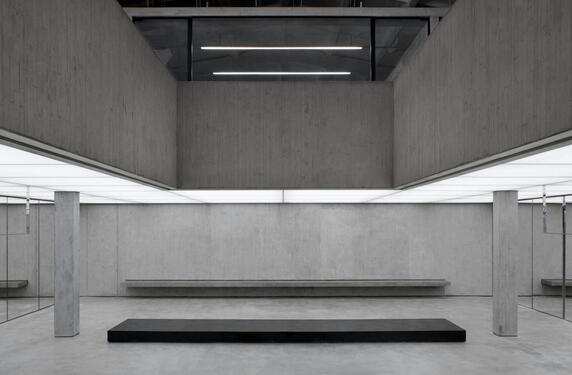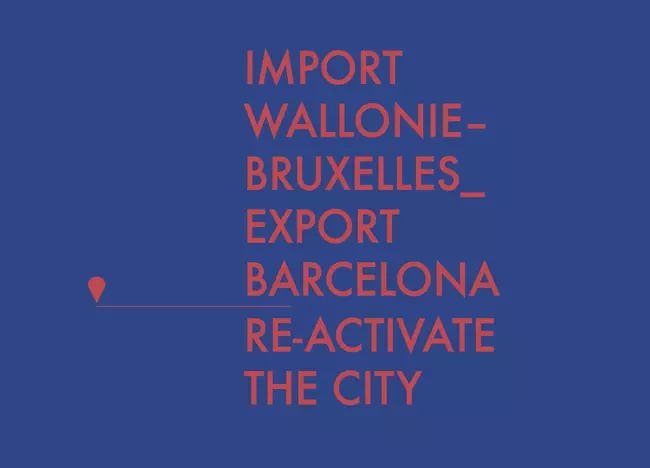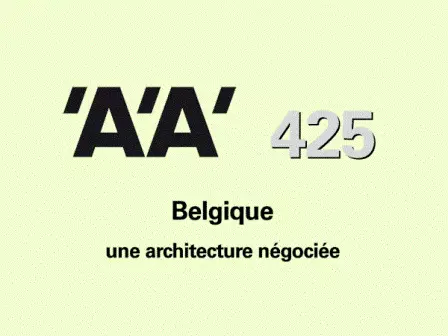- Posts
Published on 21/06/2016
INTERVIEW: Bernard Dubois, Brussels-based architect

© Maxime Delvaux WBA - A quick glance at your work shows us that your firm has carried out the vast majority of its projects abroad. Is that a conscious choice?
BD - Most of my projects to date are the result of private orders. I happen to have some friends in cities such as Paris or Milan who were soon asking me to carry out small projects for them. Gradually, those projects expanded and gave rise to new ones. This led to me working in China, for example, with retail projects for the fashion label Nicolas Andreas Taralis. We’ve done six of them now.
WBA - What is the common thread that guides you in your choice of international projects?
BD- In general, I’m very interested in all types of projects on all scales. The project comes about through the client, through his or her intentions, openness and vision. It’s very interesting working with clients who, straight away, have a strong point of view, but it’s also interesting working with clients who prefer to wait and see what we suggest to them. Generally, any project comes about through an understanding with the business owner, without whom the project wouldn’t be possible, of course. Collaboration is what creates the project and makes it possible to propose different things each time, because every client is different and every situation is different.
WBA - Do you work together with “local” architectural firms on your projects? Is it by choice or because it’s impossible to work any other way?
BD- Depending on the country and situation, I work with “local architects”. However, that definition is relative and varies from one country to another. For example, for the projects in China, the client’s representative follows the progress of the work directly with the general building contractors. It’s the building contractors that deals with all the legal documents needed for the project (permission, fire safety regulations, etc.), because Chinese legislation allows that. In Italy, on the other hand, a surveyor can apply for planning permission, while an engineer can take on the legal role of site coordinator. In France, for small projects, I often work without a local architect. But if the project is bigger, it’s more practical to work with an architect, who will take care of the administrative aspects of the project. How often I visit the site also varies depending on the country. I may hold site meetings in Paris once or several times a week, very frequently in Milan too, while in China I see the site only a few times.
WBA - You were recently published for your Valextra projects in Seoul, Paris and Milan…. Is it important to be published in order to be recognised?
BD - We spend a lot of time designing and redesigning projects and following construction works. This is often an all-consuming process that revolves around the people involved in the project. Once the work has been delivered, it’s interesting to be confronted with the opinions of others. Of course, the primary acknowledgement comes from the client. Then, publications allow us to share the work we’ve done to other people than the ones involved in the design process.
WBA - What advice would you give to young practitioners hoping to start an international career too?
BD - Most careers are built partly around choice, but also mainly around opportunities, chance and encounters. I think it’s advisable to follow up those encounters and chances naturally and not to try to force things in a direction that isn’t natural. I don’t think that the most important thing is the place or program of the projects, but rather the opportunity one has to be able to carry out the best possible project starting from that place and that program.
Bernard Dubois - Find out his profile
- BilletsAuteur
Audrey ContessePublished on 09/10/2018
-
Allier procédure et processus
"La scène belge est gage de qualité, d’humanisme et de poésie" peut-on lire dans le numéro 425 de l’Architecture d’Aujourd’ hui, dévolu à l [...]
- BilletsAuteur
Emmanuelle BornePublished on 06/07/2018
-
Belgitopie
Faut-il se fier aux expositions internationales, a fortiori à la Biennale d’architecture de Venise, pour appréhender les mouvements de fond et enjeux [...]



